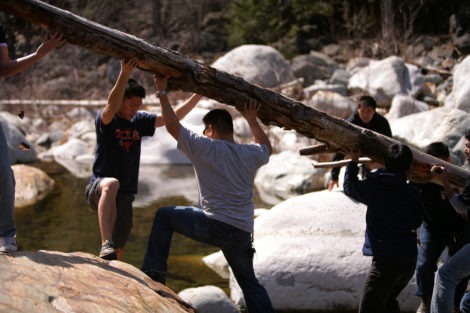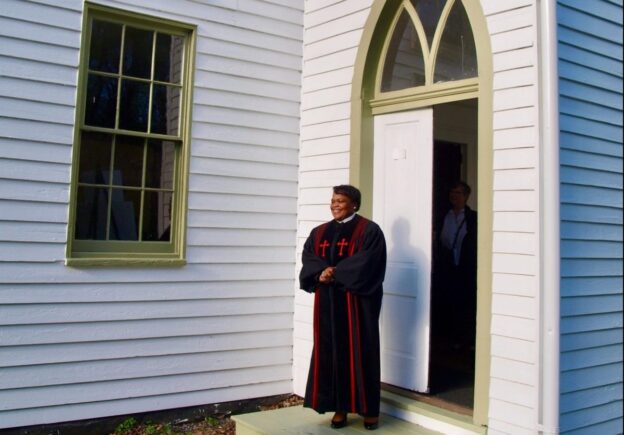Everyone in the church wants to be “fruitful.”
Sometimes this is code for what my Scottish pastor friend calls “butts and bucks” – rear ends in pews and a bountiful offering plate. While some good things grew from the church growth movement, weeds sprang up as well. One of the most tenacious tendencies that took root was the habit of equating attendance numbers with ministerial success.
Plenty of ink has been spilled critiquing the downsides of the church growth movement and positing alternative ministerial models and visions for the future.
The danger of fruitfulness and the danger of the church growth movement are two different things, however, if you’re not equating them in the first place. Models aside, how do you handle sudden fruitfulness? How do you handle a surge of involvement, engagement, and growth? Maybe you’ve worked and labored in the shadows for long, tedious months and years, to stumble into a situation where you’re unprepared for what feels like a Niagara Falls of ping pong balls you’re attempting to catch in a laundry basket.
The disciples encountered that after a long, weary night of pointless (profitless) fishing. They had used all their skills, experience, and materials to do what they did best: go fishing. And sometimes even seasoned practitioners haul up empty nets. Sometimes you faithfully practice what you know you need to do, and there is no immediate, tangible result. You question if your investment of time was wasted, you recalculate what resources you have on hand to get through the day, to feed yourself and others. You check your best sources of the most recent data on where the fish are biting, what weather looks like. In short, you do your best, and best yields dripping water from an empty net.
And then, Jesus. And somehow, around your well-earned experience and knowledge of the waters and migration patterns, around irritated, sullen fatigue, around your personal hunger, for seemingly no reason, Jesus comes. And Jesus says something counterintuitive to everything you’ve known and witnessed and accumulated over the years. But when you choose to follow, the nets lurch, sway, and fill, so heavy that they begin to break, so heavy you have to call in backup, so heavy that the haul itself becomes a problem as boats groan and equipment fails.
No expert was able to forecast it, just like no Ted Talk speaker could’ve predicted the moment the Holy Spirit would whoosh through the upper room where over a hundred women and men were crowded in prayer, wondering if today would be the day, or if they would come back, again, tomorrow on a seeming fool’s errand. How do you respond when – from your perspective – all of a sudden, the floodgates open?
First, rapid growth sometimes needs reshaped and redirected. Organic fruitfulness will fill whatever space it can find, and with limited time and resources, you may not see the crooked shape it’s taking that you need to redirect early, before it becomes a problem.
This past spring I planted seedlings in a garden, the first time I’d successfully grown tomato plants from seeds (often, you buy small plants in a package from a greenhouse or box store). I didn’t expect the seeds to germinate overly successfully. I didn’t expect the seedlings to harden off successfully, anticipating some loss when they moved from their cushy indoor lives to the outdoor elements. I had healthy expectations.
But they survived. Even after being absent for ten days in their early lives, leaving them unwatered. Now, twenty plants had sprawled over the garden area, and their day to day growth was so sudden that branches hadn’t been caught in metal tomato cages. They sprawled, tangled together, growing outward.
The organic growth followed whatever path it found, meaning that branches of the plant itself, while thriving, took crooked, awkward shape. This only became apparent during the process of driving stakes next to the thick green stalks to stake up the sprawling growth.
Intercepting the branches to stake them, reshaping their direction and form, prevented loss. Branches against the ground were more apt to be yellowed, overly moist; sometimes they blocked the view of bunches of young green tomatoes that could’ve been exposed to too much damp and not enough sunlight.
In the midst of facing twenty tomato plants creating a three-foot-tall jungle, stopping to take stock and assess the shape of the growth was vital to intervene in a shape of growth that would be additionally problematic later. It’s not a time to micromanage, but it is a time to glance at the big picture and identify potential trouble spots and retrain the growth to expand in the direction you’re aiming for.
If your growth is taking a shape that could be unhealthy, go ahead and go to the trouble of redirecting as early as possible, because the cost could be more than tomatoes exposed to slugs or wet soil, it could be souls who begin to grow and then get choked out.
Second, be ruthless in your pursuit to grow good fruit, not just lots of fruit. The idea of pruning is nothing new, but it feels odd to snap off smaller branches on a tomato plant so that those nutrients will go to tomatoes and not lots and lots of green leaves.
But not every new member-initiated ministry is the best use of resources, is it? If seemingly spontaneous growth explodes, it can tend to go off in all directions, and that isn’t always as good of a thing as it seems. You don’t want activity for activity’s sake, or growth for growth’s sake.
You want a healthy plant, a healthy garden, and good fruit that will last beyond hype and frenzy.
Third, if you find yourself in a growing boom, prepare for a harvest that will tax your resources and creativity. I see what’s growing on the twenty tomato plants outside. And I really don’t want any loss or waste. So I’m researching canning, freezing, and storing. I’m researching recipes and methods. I know I’ll have to carve some extra, flexible time for the days when everything’s coming up tomatoes. I don’t want to miss the opportunity. I want to reach for a jar of marinara sauce when it’s five degrees and snowy and smile at the July sun that’s bottled up inside it.
And you want to see a person who’s been planted and watered and is flourishing and growing and who, months and years down the road, is continuing to bear witness to the season when they came to Christ. The long-term effects of the harvest will bring joy and beauty in unexpected ways when subzero wind is howling, as it inevitably does in seasons of ministry and life.
I don’t know if you’re in a season of plodding, laboring, or attempting to catch the harvest. Sometimes it seems more manure than miracle.
But if, on the off-chance, Jesus has upended your wisdom, keep these things in mind as your nets strain, as your plants hang heavy, and be thankful.
P.S. – and pray. The other day I found something bubbling up out of my heart. I was praying for the people who would end up eating some of the extra tomatoes growing on my vines. I was praying for whomever would end up with a jar of homemade marinara sauce at Christmas. I was praying…for my tomatoes. For them to give good nutrients to growing bodies.
Sometimes one of the best things you can do in ministry is to plant a physical garden, not just a spiritual one. We all need to see results of our labor.







 learn that some people don’t like you to talk publicly about the less flattering things that have happened. However, you can’t see what is in the dark unless you shed light on it and you can’t change what you don’t acknowledge. One pastoral position I applied for yielded a call from a board member who asked me if I knew I was a black woman. “We aren’t looking for a woman, and certainly not a black woman,” the caller said. I am not sure how I was supposed to know that, especially since that information wasn’t in the job announcement.
learn that some people don’t like you to talk publicly about the less flattering things that have happened. However, you can’t see what is in the dark unless you shed light on it and you can’t change what you don’t acknowledge. One pastoral position I applied for yielded a call from a board member who asked me if I knew I was a black woman. “We aren’t looking for a woman, and certainly not a black woman,” the caller said. I am not sure how I was supposed to know that, especially since that information wasn’t in the job announcement.
 Recently earning a PhD in Theology and specializing in Missiology and Wesleyan Theology from Durham University, his thesis is a dive into “Consuming Mission: Towards a Theology of Short-Term Mission and Pilgrimage.” He is a Senior John Wesley Fellow and a Senior Harry Denman Fellow. His publications and presentations include “The Overlooked Globalizers: Wesleyan Short-Term Missioners, The Missio Dei, and World Christianity.”
Recently earning a PhD in Theology and specializing in Missiology and Wesleyan Theology from Durham University, his thesis is a dive into “Consuming Mission: Towards a Theology of Short-Term Mission and Pilgrimage.” He is a Senior John Wesley Fellow and a Senior Harry Denman Fellow. His publications and presentations include “The Overlooked Globalizers: Wesleyan Short-Term Missioners, The Missio Dei, and World Christianity.” 



















